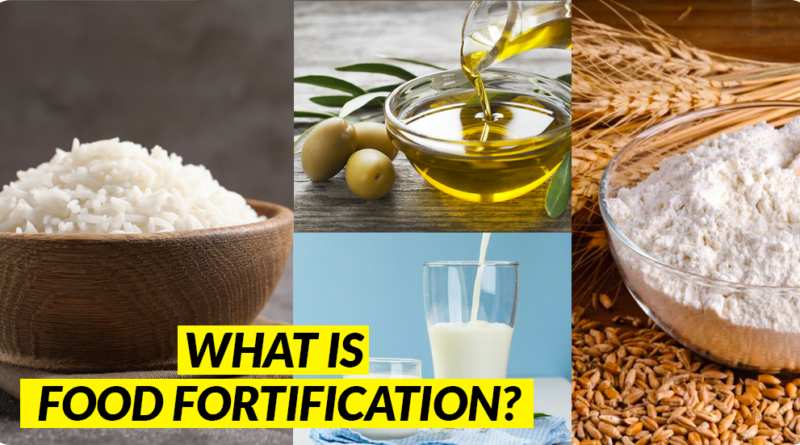What is Food Fortification?
Fortification is defined as the addition of key minerals and vitamins like zinc, iodine, iron, vitamin A and D, to staple food items like milk, oil, wheat, rice and salt to improve the nutritional content of the diet.
Why do we need to fortify foods?
The deficiency of micronutrients is known as hidden hunger which possesses serious health risk to our population. Due to the lack of variety and unavailability of adequate food in our diet, the body is unable to get an adequate amount of micronutrients.
Fortification helps to improve the nutritional status of food items. India has a high burden of micronutrient deficiencies caused by iron, folic acid, iodine, vitamin A which leads to anaemia, goitre, night blindness and birth defects. Fortification helps to address all these micronutrient deficiencies. It also helps to replenish the nutrients which are lost during processing.
Benefits of fortification:
- It is a safe method of improving the nutritional status of people like the addition of micronutrients does not pose any health risk to people. The quantity to be added is well regulated and as per the standards for safe consumption.
- Nutrients are added to staple food products which are widely consumed by the masses.
- It is cost-effective and does not require people to change their food habits or eating patterns.
- Fortification does not have any effect on the aroma, texture or taste of the food.
Fortified food items :
- Rice: Fortified with vitamin B12, iron and folic acid.
- Wheat flour: Fortified with vitamin B12, iron and folic acid.
- Salt: fortified with iron and iodine
- Edible oil: fortified with vitamin A and vitamin D
- Milk: Fortified with vitamin A and vitamin D.
How to identify fortified food items: Logo





